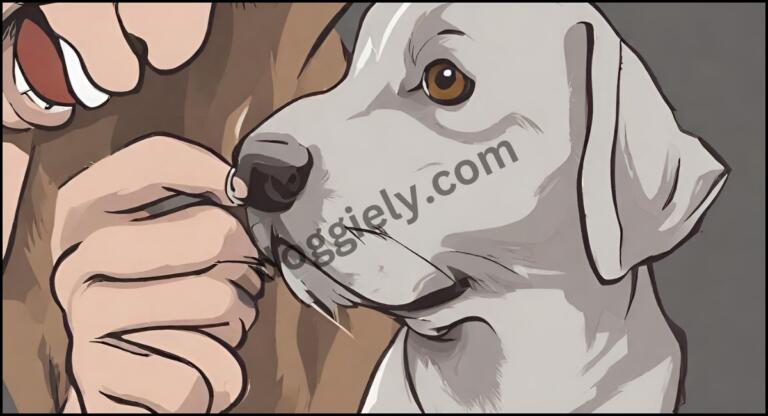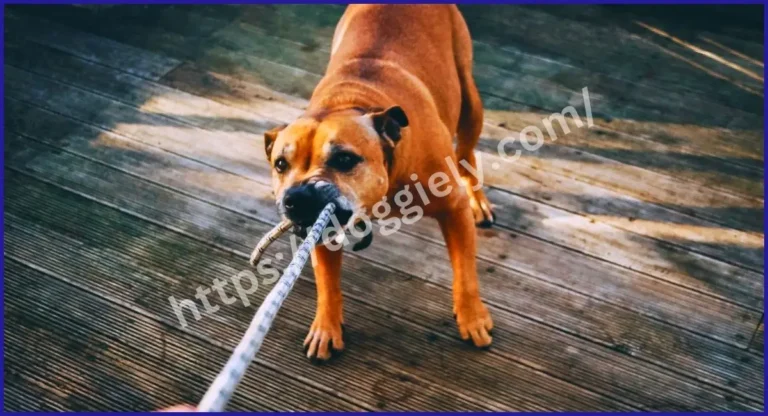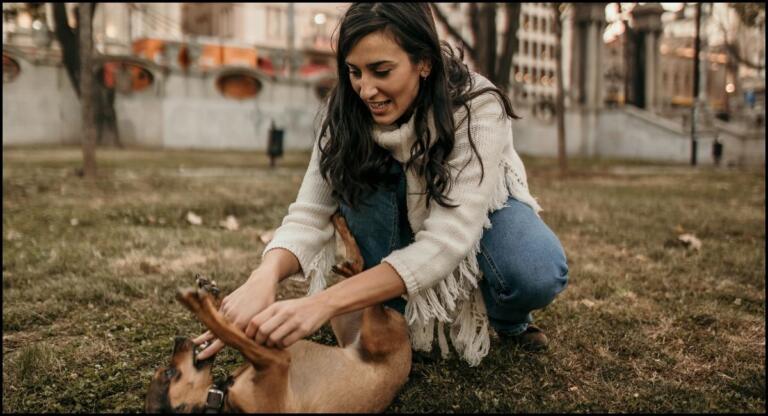Dog Tails: Exploring the Significance In Dog’s Life

Dog Tails: Exploring the Significance In Dog’s Life: To know in details read our full article.
In the world of dogs, the tail is not just an appendage but a crucial tool for communication, balance, and expression. This article aims to shed light on the dog tails meaning, multifaceted role of dog tails, delving into their physiological functions, communicative aspects, and the implications for dog welfare.
Dog Tails: Exploring the Significance In Dog’s Life
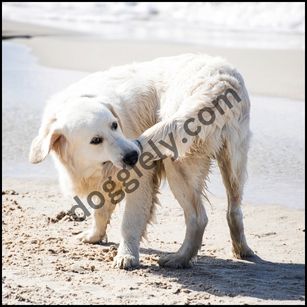
The Anatomy of a Dog’s Tail
The tail of a dog is essentially an extension of its spine. Comprised of a series of vertebrae, surrounded by muscles, nerves, and blood vessels, it plays several key roles in a dog’s life. The tail’s structure allows for an impressive range of movements and is a vital component in maintaining balance, especially during agile movements like running or swimming.
The Language of dog Tail Wagging
Dog wag tail meaning is often associated with happiness, but the story is more nuanced. The tail’s position and movement can convey a spectrum of emotions and intentions.
- Happiness and Excitement: A tail wagging vigorously usually indicates a dog is happy or excited. This is often seen when you return home, and your dog greets you with an energetically wagging tail.
- Curiosity and Alertness: A tail held high usually signifies alertness or curiosity. Dogs often exhibit this when they are interested in something or are exploring their surroundings.
- Agitation or Aggression: Contrary to popular belief, a wagging tail doesn’t always mean a dog is friendly. A stiff, rapidly wagging tail can indicate agitation or aggression. This is a warning signal to back off.
- Fear or Submission: A tail tucked between the legs signifies fear or submission. It’s a dog’s way of saying it feels threatened or uncomfortable.
- Relaxed State: A tail in its natural position indicates that the dog is relaxed and comfortable with the situation.
dog tail meaning chart
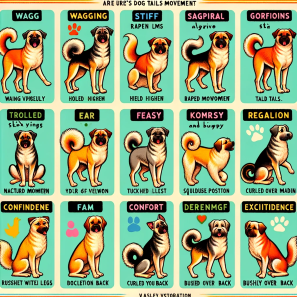
Here is a table listing different types of dog tail movements, specific dog breeds known for such tail movements, and the dogs tail meaning commonly associated with these movements:
| Tail Movement | Dog Breeds | Meaning |
|---|---|---|
| dog tail Wagging Vigorously | Labrador Retriever, Golden Retriever | Happiness or Excitement |
| dog tail Held High | German Shepherd, Siberian Husky | Alertness or Curiosity |
| Stiff, Rapid Movement | Rottweiler, Doberman Pinscher | Agitation or Aggression |
| Tucked Between Legs | Greyhound, Whippet | Fear or Submission |
| Relaxed, Natural Position | Beagle, Boxer | Relaxed or Comfortable |
| dog tail Curled Over Back | Pug, Akita | Confidence or Alertness |
| dog tail Bushy and Upright | Alaskan Malamute, Shiba Inu | Alertness or Excitement |
| dog tail Slow Wagging | Bulldog, Mastiff | Uncertainty or Apprehension |
| dog Tail Pointing Straight Out | Pointer, Weimaraner | Intense Focus or Hunting Mode |
| dog tail Quick, Short Wags | Chihuahua, Jack Russell Terrier | Anxiety or Tension |
| Chasing or Biting Tail | Any Breed (Behavioral) | Playfulness or Behavioral Issue |
| dog wagging tail in circle | Border Collie, Australian Shepherd | Excitement or Herding Behavior |
| Raised Tail Wagging Slowly | Akita, Alaskan Malamute | Dominance or Confidence |
| Lowered Tail Wagging Fast | Cocker Spaniel, Labrador Retriever | Nervousness or Submission |
| Horizontal and Still | Pointer, Setter | Attention or Anticipation |
| Slight Wag at the Tip | English Bulldog, Pug | Uncertainty or Indecision |
| Tail Spinning in a Helicopter Motion | Cairn Terrier, Border Collie | Extreme Excitement or Playfulness |
| Wagging With Whole Body | Boxer, Staffordshire Bull Terrier | Overwhelming Joy or Excitement |
| dog tail straight up | Samoyed, Chihuahua | High Alertness or Challenge |
| dog tail Vibrating | Labrador Retriever, Spaniel Breeds | High Intensity Excitement or Prey Drive |
| dog Tail Flicks or Twitches | Cat-like Breeds (e.g., Basenji) | Alertness or Minor Irritation |
| dog Tail Wrapped Around Legs | Shy or Timid Dogs (Breed-Independent) | Extreme Nervousness or Fear |
DOG Tail Health: Understanding and Caring for Your Dog’s Tail
When it comes to a dog’s health, their tail might not be the first thing that comes to mind. However, the tail is an important part of a dog’s body, both for communication and physical balance.
This article focuses on the health and veterinary care aspects of dog tails, catering to pet owners who are seeking information to ensure the wellbeing of their canine companions.
The Importance of a Healthy Tail
A dog’s tail, an extension of its spine, is made up of vertebrae, muscles, nerves, and blood vessels.
It’s not just a tool for communication; it also plays a crucial role in maintaining balance, especially when dogs are running or making agile movements.
Therefore, maintaining the health of this appendage is vital for a dog’s overall wellbeing.
Common Tail Health Issues
- Injuries: Tail injuries can occur due to accidents, fights with other animals, or getting caught in doors. Symptoms include noticeable pain, swelling, or inability to wag the tail.
- Infections: Dogs can develop infections in the tail area, especially if they have long fur that gets matted. These infections can be surface level or deeper in the skin.
- Allergies: Just like other parts of the body, tails can be affected by allergies, leading to itching and discomfort.
- Limber Tail Syndrome: Common in working and sporting breeds, this condition, also known as ‘cold tail’ or ‘broken wag’, causes a limp, painful tail, usually due to overexertion or cold weather.
- Parasites: Fleas and ticks can lodge near the tail base, causing irritation and potentially leading to more serious health issues.
Diagnosis and Treatment
If you notice changes in your dog’s tail, such as a difference in movement, swelling, or signs of pain, it’s essential to consult a veterinarian. They can diagnose the issue through physical examination, X-rays, or other tests. Treatment varies depending on the condition but may include medications, rest, or in severe cases, surgery.
Preventive Care
- Regular Grooming: Keeping the tail clean and free of mats, especially in long-haired breeds, is crucial.
- Parasite Control: Regular flea and tick control measures can prevent infestations around the tail area.
- Observation: Regularly checking your dog’s tail for cuts, swelling, or other abnormalities can help catch issues early.
- Proper Exercise: Ensuring your dog doesn’t overexert themselves during physical activities can prevent conditions like limber tail syndrome.
Tail Docking
It’s also important to address the practice of tail docking. While some argue it’s beneficial for certain breeds, many veterinarians and animal welfare organizations oppose it for non-medical reasons, advocating for the importance of a dog’s tail in its physical and emotional expression.
Essential Grooming Tips for Your Dog’s Tail
Grooming and maintaining the health of a dog’s tail is essential, not only for aesthetic purposes but also for the overall well-being of the pet. Here are some importance of grooming and care for your dog’s tail, offering tips and best practices.
Regular Grooming: A Must for Tail Health
- Brushing: Regular brushing is crucial, especially for dogs with long hair. It prevents matting and tangling, which can cause pain and skin irritation. Use a brush suitable for your dog’s hair type and gently brush out any knots or debris.
- Bathing: While bathing your dog, pay special attention to the tail. Ensure that it’s thoroughly cleaned and rinsed, as soap residue can cause irritation.
- Trimming: For certain breeds, trimming the hair around the tail is necessary to maintain hygiene and appearance. This should be done carefully to avoid cutting the skin.
- Checking for Parasites: The base of the tail is a common spot for fleas and ticks. Regular checks and preventive treatments are essential.
Health Considerations
- Skin Conditions: Look out for signs of skin issues such as redness, swelling, or unusual odor. These could indicate infections or allergies.
- Injuries: Tails can get injured easily. Be vigilant for any signs of injury or pain, and consult a veterinarian if you notice anything unusual.
- Anal Glands: These glands are located near the tail base and can sometimes become impacted or infected. Regular vet check-ups can help prevent these issues.
Conclusion
A dog’s tail is an expressive and sensitive part of their body that requires regular grooming and care. Tail health is an integral part of a dog’s overall well-being, and responsible pet ownership includes taking care of this important appendage. By following these grooming tips and keeping an eye on the health of your dog’s tail, you can ensure your furry friend remains happy, healthy, and expressive.
FAQ
1. WHAT IS THE purpose of dog tail?
The purpose of a dog’s tail extends beyond its role as a physical appendage; it serves several key functions that are essential to a dog’s well-being and communication:
- Communication: One of the primary purposes of a dog’s tail is communication. Dogs use their tails to convey a wide range of emotions to both humans and other animals. The position and movement of the tail can express feelings such as happiness, excitement, anxiety, aggression, and fear. For instance, a wagging tail often indicates excitement or happiness, while a tail tucked between the legs usually signifies fear or submission.
- Balance: The tail plays a crucial role in helping dogs maintain balance. This is especially evident when dogs are running, turning quickly, or walking on narrow structures. The tail acts like a counterbalance to help stabilize the dog’s body during these movements.
- Body Language and Social Interaction: Dogs also use their tails as part of their body language during social interactions with other dogs and animals. For example, a raised tail can indicate confidence or dominance, while a lowered tail may suggest submission or a non-threatening posture.
- Emotional Indicator: The tail can be an indicator of a dog’s internal emotional state. Observing tail movements can provide insights into how a dog is feeling, which can be especially useful in environments where a dog might feel stressed, anxious, or excited.
- Physical Protection: In some breeds, the tail also serves to protect sensitive areas. For example, the thick, bushy tails of breeds like the Alaskan Malamute or Siberian Husky can cover their faces and noses during sleep, providing warmth and protection from the cold.
- Sensory Function: The tail is an extension of the dog’s spine and is rich in nerves and muscles. This makes it a sensitive appendage that can react to both physical sensations and emotional stimuli.
- Breeding and Breed Characteristics: In certain breeds, the tail is a distinct breed characteristic, important in showing standards and breed profiles. The tail’s shape, length, and carriage can be distinctive aspects of a breed’s appearance.
Understanding the purpose of a dog’s tail is essential for interpreting their behavior and ensuring their well-being. It is a vital part of their anatomy that serves multiple functions, from communication to balance and emotional expression.
2. why my dog wags tail when i talk?
When your dog wags its tail while you talk to it, it’s generally a sign of positive emotions and social engagement. This behavior is a key part of canine communication, and understanding it can enhance the bond between you and your dog. Here’s why your dog might wag its tail when you talk:
- Happiness and Excitement: Dogs often wag their tails to express joy and excitement. When you talk to your dog, it likely associates your voice with positive experiences, such as attention, affection, or the anticipation of a walk or meal.
- Social Connection: Dogs are social animals, and your interaction with them through talking can be perceived as a social gesture. Tail wagging in this context can be a way of showing that they are engaged and attentive to the social interaction.
- Recognition and Affection: Dogs can recognize their owners’ voices and may wag their tails as a sign of affection or acknowledgment of your presence and attention.
- Anticipation of a Reward: If your dog has learned that good things happen when you talk (like receiving treats, going for walks, or playtime), it might wag its tail in anticipation of these rewards.
- Submission or Appeasement: In some cases, especially if the tail wagging is accompanied by other submissive body language, it might indicate that your dog is trying to appease you, showing that it acknowledges you as the leader.
- Comfort and Contentment: Tail wagging can also be a sign that your dog feels comfortable and content in your presence, enjoying the interaction and communication.
It’s important to look at the whole body language of your dog, not just the tail wagging, to fully understand its emotions and intentions. Factors like the tail’s position, the speed of the wagging, and your dog’s overall demeanor can provide more context about its feelings when you’re talking to it.
3. tail up dog meaning
When a dog holds its tail up, it can convey various meanings, often depending on the specific context, the dog’s breed, and its overall body language. Generally, a tail held up can indicate several emotional states or intentions:
- Confidence and Alertness: A tail held high often signals that a dog is confident, alert, and attentive to its surroundings. It can be a sign that the dog is taking in its environment and responding to stimuli with interest.
- Dominance: In social interactions with other dogs, a tail held up might be a display of dominance or assertiveness. It can be a way for a dog to express its perceived social status or control over a situation.
- Excitement: When a dog is excited or enthusiastic, such as during playtime or when greeting someone, it might hold its tail up. This can be accompanied by other signs of excitement like a wagging tail, jumping, or barking.
- Aggression or Warning: In some cases, a tail held rigidly up can be a warning sign, indicating that a dog might be feeling threatened or aggressive. This is especially true if the tail is stiff and the dog’s other body language (like bared teeth or raised hackles) suggests aggression.
- Breed-Specific Tail Carriage: It’s important to note that different breeds have different natural tail positions. For example, some breeds, like Siberian Huskies or Greyhounds, tend to carry their tails higher than others. In these cases, a high tail might not indicate a specific emotional state but rather a breed-specific trait.
- Curiosity: A dog might also hold its tail up when it’s curious about something, such as a new scent, sound, or object in its environment.
It’s crucial to consider the entire context, including the dog’s breed, the situation, and other aspects of the dog’s body language, to accurately interpret what it means when a dog holds its tail up. This comprehensive approach helps in understanding the dog’s emotional state and intentions better.
faq
1. Why Do Dogs Have Tails?
- Answer: Dogs have tails for multiple reasons, including balance, communication, and expressing emotions. Tails help them maintain stability while running and making turns, and they are also used to convey a wide range of emotions and social signals.
2. What Does a Dog’s Tail Wagging Mean?
- Answer: Tail wagging can mean several things depending on the context. It generally indicates excitement, happiness, or contentment, but it can also be a sign of nervousness, anxiety, or submission.
3. Can Dogs Control Their Tails?
- Answer: Dogs have some control over their tails, using them intentionally to communicate. However, certain tail movements can be instinctive reactions to emotions or environmental stimuli.
4. Why Do Some Dogs Have Curly Tails?
- Answer: Curly tails in dogs are a result of genetics. Certain breeds, like Pugs and Shiba Inus, are known for their curly tails, which are a breed-specific trait.
5. Do All Dogs Have Tails?
- Answer: Most dogs are born with tails, but the length and shape vary by breed. Some breeds have naturally short or bobbed tails, and in some cases, tails are docked for various reasons, though the practice is controversial and banned in many places.
6. What is Tail Docking?
- Answer: Tail docking is the practice of removing a portion of a dog’s tail, usually done when the dog is a few days old. It’s traditionally done for specific breeds for historical working reasons, aesthetic purposes, or health concerns, but it’s increasingly viewed as unnecessary and unethical.
7. Can a Dog Break Its Tail?
- Answer: Yes, dogs can break or injure their tails. Trauma, such as getting the tail caught or hit, can lead to fractures or nerve damage.
8. How Do Dogs Use Their Tails to Communicate?
- Answer: Dogs use their tails to communicate various emotions. A high, stiff tail can indicate alertness or aggression, while a low tail might show submission or fear. A relaxed, wagging tail typically signifies happiness.
9. What Are Common Tail Problems in Dogs?
- Answer: Common tail problems include injuries, fractures, infections, and skin issues. Dogs can also suffer from “limber tail syndrome,” which causes pain and limpness in the tail.
10. Can Dogs Feel Pain in Their Tails?
Answer: Yes, dogs can feel pain in their tails. The tail contains nerves and blood vessels, so injuries can be painful.
11. How Should I Care for My Dog’s Tail?
Answer: Regular grooming and inspection of the tail are important. Keep the area clean, check for fleas and ticks, and watch for any signs of injury or infection.
12. Are There Breeds Without Tails?
Answer: Some breeds, like the Australian Shepherd and the Brittany Spaniel, may be born with a naturally bobbed or very short tail.
Related Posts:
Read More: Why Does My Dog Open His Mouth When I Pet Him? 7 Reasons
Read More: Why Does My Dog Keep Sniffing My Legs: 5 Common Reasons
Read More: Why Does My Dog Bite Me In The Morning? 2 Way To safe From
Read More: Why Are My Dogs Balls Black? Best Number 1 Answer
Read More: Why Do Dogs Like Peanut Butter?
Read More: Why Does My Dog Nibble My Ear? 10 Reasons
Read More: Why Does My Dog Move Its Bed Around?
Read More: Why Does My Dog Bring Me His Food?
Read More: Why Does My Dog Lay His Head Over My Neck? 7 Reasons
